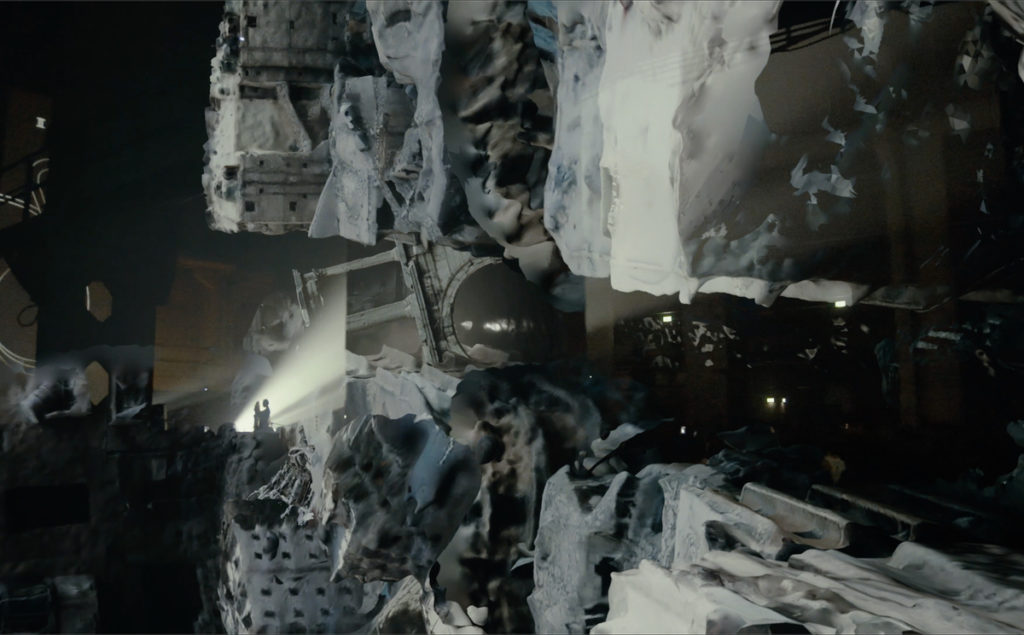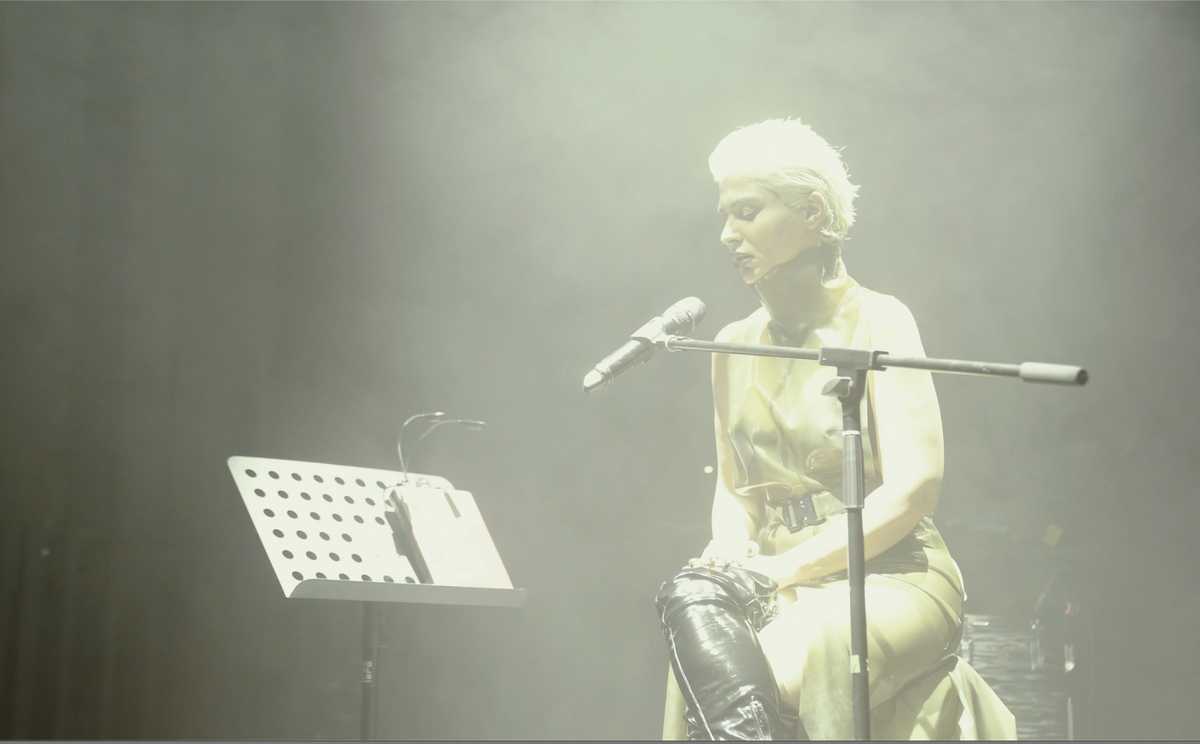Hatam & Hacklander join forces with Kurdish vocalist Hani Mojtahedy in a performance responding to Reza Negarestani’s pioneering work of theory-fiction, Cyclonopedia.
For their second major performance piece, LABOUR enlisted the talents of renowned Kurdish vocalist Hani Mojtahedy, as well as artists Evelyn Bencicova, Enes Güc and Zeynep Schilling to form Mi†ra, a collective that derives it’s name from a word common to the Indo-Iranian languages meaning ‘covenant’. The name also alludes to Mithra, an angelic deity from the Zoroastrian religion said to be the all-seeing protector of truth.
The group came together in response to the Iranian philosopher Reza Negarestani’s 2008 book Cyclonopedia: Complicity with Anonymous Materials, a pioneering work of theoretical-fiction in which he writes about oil as a sentient being, referring to it as a “pipeline crawler”, “Tellurian Lube” and “hydrocarbon corpse juice”. Told over three chapters, ‘The Wheel’, ‘Cyclone’ and ‘Xerodrome’, ‘nine-sum sorcery’ is presented as a lament, following the oil’s journey as it is drawn from the earth via pipeline into the dust and heat of the desert.



‘nine-sum sorcery’ can be understood as an occult incitation to the dark energies, natural, political and otherwise, that are released when oil is extracted from the ground. This ritual is focused through the haunting vocal performance of Mojtahedy, who interprets Kurdish and Persian verses accompanied by an electronic composition from Farahnaz Hatam, performing under her solo production alias HATAM, and percussion from Colin Hacklander.
Opening the performance with a reading of ‘Poshte-Daryaha-Shahrist’, a poem by the Iranian modernist Sohrab Sepehri, Mojtahedy then sings verses from poems by Ahmad Shamlou and Rahim Loghmani. The melodic vocal line she employs follows dastgah, a musical modal system that makes up one of the principal components of traditional Persian music. You can see the words of Sohrab Sepehri’s poem ‘Poshte-Daryaha-Shahrist’ below:
سهر اب سپهری
پشت دریاها
قايقي خواهم ساخت
خواهم اند اخت به آب
دور خواهم شد از این خاک غریب
که در آن میچکسی نیست که در بیشه ی عشق
.قهرمانان را بیدار کند
قایق از تور تهی
.و دل از آرزوي مروارید
.هچنان خواهم راند
نه به آبیها دل خواهم بست
نه به دریا-پریانی که سر از آب به در می آرند
و در آن تابش تنهایی ماهی گیران
می فشانند فسون از سر گیسوهاشان-
: همچنان خواهم راند. هچنان خواهم خو اند
“دور باید شدء دور.”
.آن شهر اساطیر ند اشت
.زن آن شهر به سرشاری یک خوشه ی انگور نبود
.آیینه ی تالاریء سرخوشی ها را تکرار نکرد
.چاله آبی حتیء. مشعلی را ننمود
.دور باید شد»ء دور
شب سرودش را خواندء
.نوبت پنجره ماست
.هچنان خواهم خو اند
هچنان خواهم ر اند
پشت دریاها شهری است
.که در آن پنجرهها رو به ملی باز است
بامها جای کبوترهایی است که به فواره ی هوش
.بشری مینگرند
.دست هر کودک ده ساله ی شهرء خانه معرفتی است
مردم شهر به یک چینه چنان مينگرند
.که به یک شعله» به یک خواب لطیف
خاک» موسیقی احساس تو را ميشنود
.و صد ای پر مرفان اساطیر میآید در باد
پشت دریاها شهری است
که در آن وسعت خورشید به اندازه ی چشمان
.سحرخیزان است
.شاعر ان وارث آب و خرد و روشنی اند
!پشت دریاها شهری است
.قایقی باید ساخت



It is through these words that the magical potential of ‘nine-sum sorcery’ is channeled, as LABOUR and Mi†ra invoke, in their own words, “a realm of great constructive potential that exists before the destructive and negative force of homogenisation.” The symbolic process of oil extraction is likened to the reified development of the polytheistic worship of ancient religions, as embodied by Mi†ra, to the monotheistic focus of modernity.
The premiere of ‘nine-sum sorcery’ took place at the 2019 edition of Berlin Atonal. Lighting was directed by MFO and latex costumes were designed by Anna Gloria Flores, aka HYDRA.
For more information about LABOUR and their work you can follow them on Instagram and visit Farahnaz Hatam and Colin Hacklander’s website.
Watch next: LABOUR Presents – next time, die consciously (بیگانگی) – Part Two




